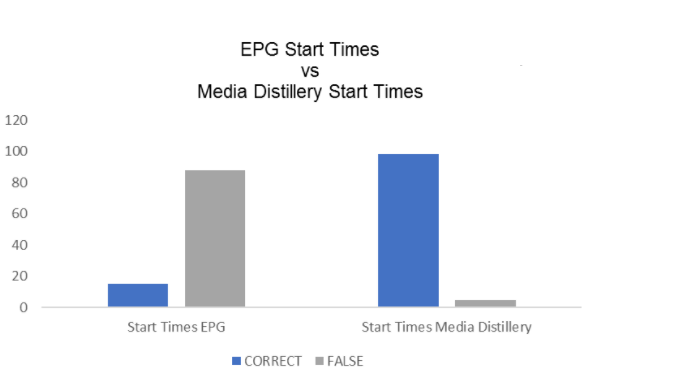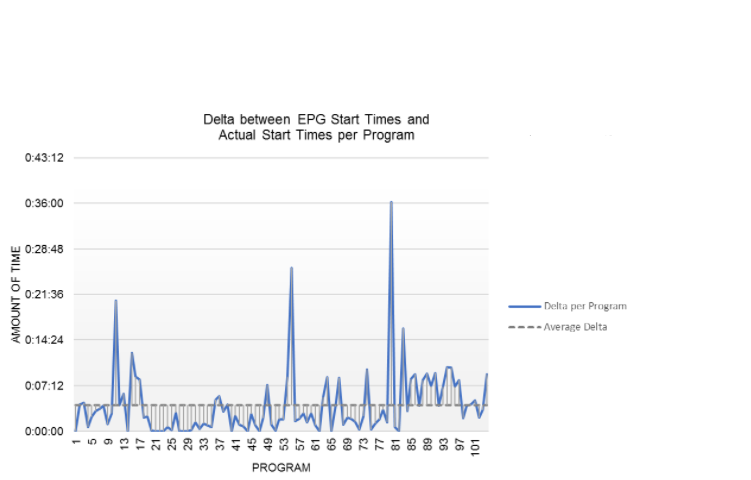The TV landscape is evolving: more and more consumers feel limited by the possibilities linear TV provides and the growing trend is on-demand consumption of content. To cater to this demand, most TV Operators nowadays create recordings of all linear content across all broadcast channels and offer the ability to replay such recordings for a certain period of time. TV Operators usually base the scheduling of the replay platform on the electronic program guide (EPG) which they get from broadcasters. This causes one of today’s biggest flaws of replay platforms: the linear broadcast stream and the EPG schedule are not fully aligned. This creates frustration and it impacts the consumer satisfaction and the Net Promotor Score of the TV Operator in a negative way. This article will discuss how flawed the start times in the EPG currently are and how this issue can be dealt with in order to better engage your consumers.
Unfortunately the linear broadcast stream and the EPG schedule are not fully aligned. Firstly, there are ad breaks between programs that are not listed in the EPG and secondly, programs might run out or start earlier than scheduled. These discrepancies occur in real-time and therefore the traditional EPG-data suppliers (that deliver such data beforehand) cannot cope with changes in the actual schedule. Some broadcasters send the accurate start times of TV programs to the TV operator, but most don’t. And for the ones who do; every broadcaster has its own delivery timeframe (from right after the program up to a day later). These inconsistencies make it very hard for TV Operators to create an optimal and consistent consumer experience across all channels that are available for replay.
This results in a sub-optimal customer experience; today’s consumer is used to have desired content available instantly from other ‘native’ OTT-platforms. In order to cope with the situation, some TV Operators are manually correcting the EPG start times while others provide fast-forward ability during the initial 2-5 minutes of each recording (often fast-forward rights for the entire program are limited by the broadcasters).
Media Distillery has created a product called ‘EPG Correction’ which corrects EPG start times. Through detection of visual and audio cues in TV channels, we determine the accurate EPG start times within 1 minute after the actual start time. For example, if a TV program is scheduled to start for 11:00, but the actual start time is 11:02:43, we can identify the actual start time before 11:03:43. The near real-time aspect is particularly convenient for being able to restart the program while it is still running (in the example above: when a consumer wants to start watching at 11:10). We apply machine learning and computer vision techniques to detect channel logos (static, dynamic and transparent), other logos or visual intros, visual or audio bumpers etc. Our platform is able to analyze an infinite number of channels in real-time because of a horizontally scalable architecture.
To illustrate the impact of EPG Correction, I hereby show some example results. During a period of two days, we analyzed the Dutch TV channel NPO1 day and night, in total 103 programs. We found that the EPG start times were only accurate (within 5 seconds of the actual start time) 15 times, whereas the highest discrepancy measured was 36 minutes and 11 seconds. The average difference between the EPG start times and the corrected start times was 246 seconds.


These figures are not limited to NPO1 in the Netherlands: Media Distillery has experience with many TV channels in various countries and all results are comparable. We are happy that we can help TV Operators by increasing engagement of their consumers to their Replay platforms.
Media Distillery develops technology that analyzes video content in real-time. We apply cutting-edge deep learning, artificial intelligence and data mining techniques such as speech, face, text and logo recognition to filter all relevant information. The synergistic approach of combining all these different technologies provides highly accurate results. This technology helps TV Operators to optimize their OTT-offering and to create new innovative products in this changing market. Contact us if you’re interested in a demo.
July 26, 2017